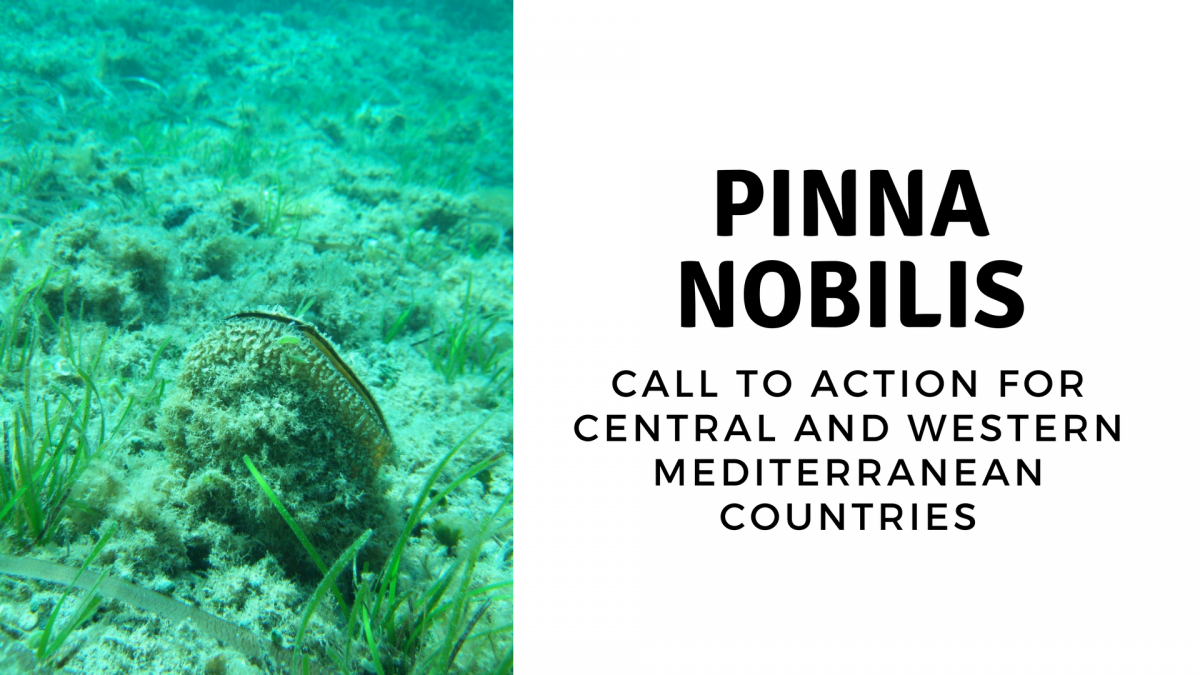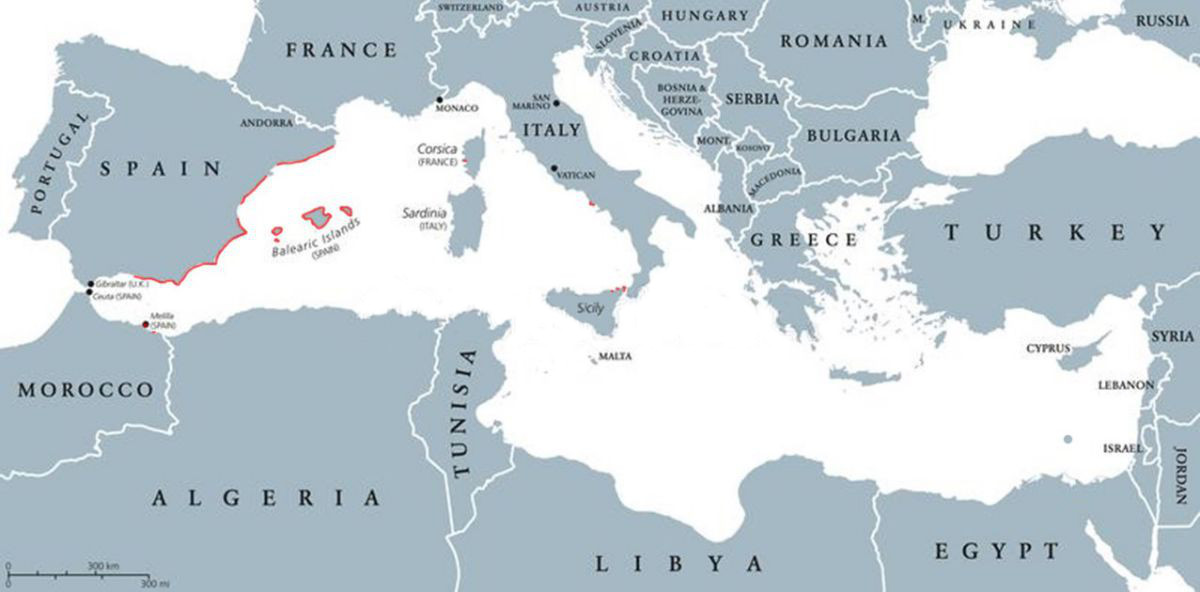Pinna nobilis mass mortality outbreak in the Mediterranean – call to action for central and western Mediterranean countries
Mass mortality events of the endemic bivalve Pinna nobilis (pen shell) have been recorded in the Western Mediterranean populations over the last year and a half.
They first occurred in the south-east of the Iberian Peninsula and Balearic Islands in late 2016 and have been rapidly spreading ever since, causing the mortality of around 99% of individuals in all infected populations. To date, the mortality has been confirmed along the entire Spanish coast and in several locations in Corsica and Italy.
Experts from Spain have confirmed that the outbreak is caused by a new species of haplosporidian parasite which is found in digestive glands of infected individuals. When infected in their natural environment, pen shells display mantle retraction, no reaction to stimuli and open valves, as they are no longer able to close their shells. The death is attributed to direct blockage of the digestive gland by the parasite and subsequent starvation of the bivalve. Once the populations are infected, the likelihood of survival of the individuals is very low, with no possibility of creating buffer zones.
Based on the currently available information and the experts knowledge gathered in the meeting, the IUCN Centre for Mediterranean Cooperation is proposing a series of recommendations for those regions in the Western and Central Mediterranean, as they represent key areas for early action and rapid implementation of conservation measures:
1. INCREASE MONITORING FREQUENCY in Western and Central Mediterranean. The monitoring should be conducted particularly every month during summer time, including:
- Monitor (by visual means) the status of the populations of Pinna nobilis and Pinna rudis on a monthly basis.
- Carry out tissue biopsies (histological and molecular analysis) of the populations in each area to find out the presence or absence of the parasite. Even if individuals look healthy, is possible that the parasite just arrive.
- Report any unusual changes in the populations. If a mass mortality of the population is observed, a rescue programme to the populations that have not being affected (and with the confirmation that the parasite is not present) should be put in place. The report information of these mortality events would also allow us to alert and prepare other areas.
2. PREPARE A RESCUE PROGRAMME
- The development of a rescue programme closed to the affected areas is paramount and it should be developed as soon as possible in areas where there are important density of Pinna nobilis and the parasite has confirmed not arrived. These measures should be conceived respecting the different local realities and in relation to the evolution of this highly dynamic phenomenon. Rescue programme should be targeted to adults and juveniles.
- To enhance the resilience of natural Pinna nobilis populations, individuals could be protected by exclusion cages to decrease predation. Reducing anthropogenic impacts and declaring protected areas or microreserves around Pinna nobilis populations in these areas are key to the survival of the species if the spread of the parasite continues.
Captivity breeding programme for future restocking of resistant juveniles could be a possibility. For this, is important to complete the hatchery culture of the pen shell.
- Monitoring the natural recruitment with larvae collectors as well as using/testing the ropes of aquaculture farms
3. RAISE THE ISSUE AT NATIONAL LEVEL AND ADVOCATE FOR THE DEVELOPMENT OF A RESCUE PROGRAMME that would target both adult and juvenile specimens. First rescue programmes are already underway in Spain and France, with the aim of studying the pathogen under different conditions, starting a captivity breeding programme and exploring the possibility of transplantation of the juveniles.
4. COLLABORATE IN THE IDENTIFICATION OF PINNA NOBILIS HOTSPOTS in the entire region. Populations with high densities in areas that still haven’t been affected by the pathogen, should be priority sites for the early implementation of management measures.
Please contact us if your know of MPAs or particular localities that presents a significant (high density with more than 10 or 20 individuals per 100m2) of P. nobilis.
For further informatoon, contact: Maria del Mar Otero, IUCN Centre for Mediterranean Cooperation MariadelMar.OTERO@iucn.org





